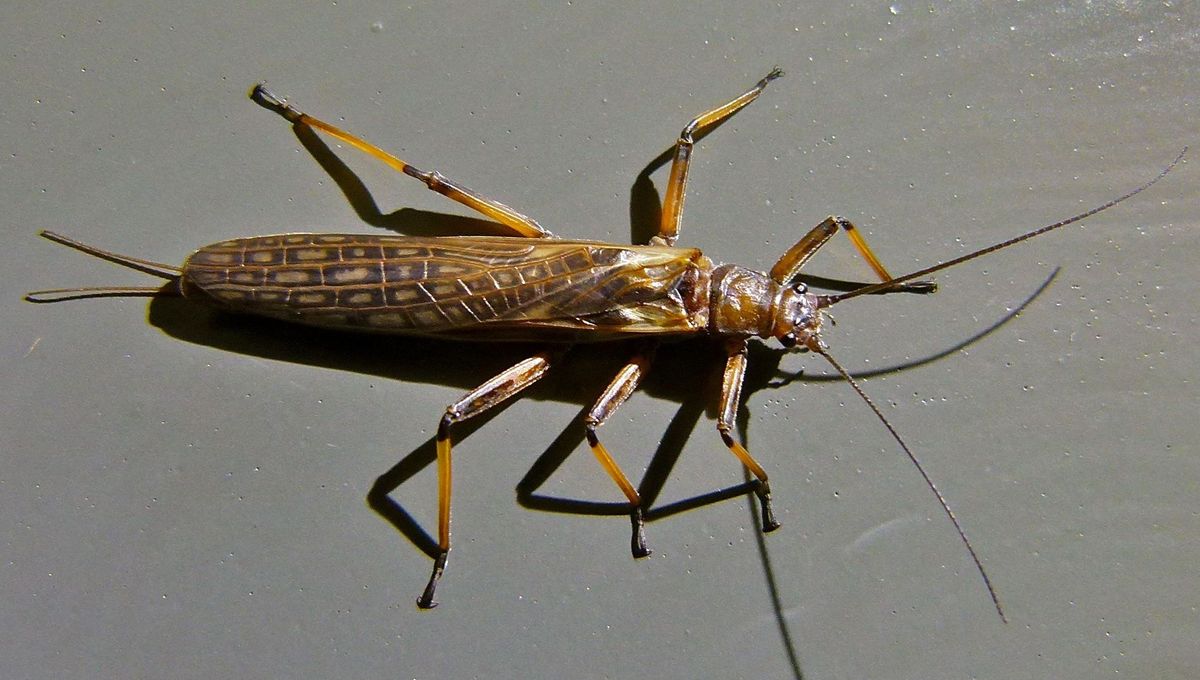
In a stark example of the impact of human activity on the world around us, scientists are reporting that Aotearoa New Zealand’s native stoneflies have changed color as a direct result of deforestation.
We tend to think of evolution as a series of very slow, incremental changes over millennia. Even the word “evolution” conjures up images of Victorian pencil drawings of animals, and sepia-toned photos of old men with beards. But the natural world is dynamic and ever-changing, and if you know where to look you can see cases of evolution happening on much faster timescales.
The stoneflies are another example – “arguably”, writes the University of Otago in a statement, “the world’s most clear-cut case of animal evolution in response to change made by humans.”
A total of 1,204 specimens of stoneflies from the Zelandoperla genus were collected across 19 different habitats – nine forested and 10 deforested.
In forested habitats where there are lots of bird predators to contend with, Zelandoperla have been observed developing a melanistic coloration. These darker-bodied bugs have an advantage because they mimic another stonefly species, Austroperla cyrene, which produce cyanide and are therefore poisonous to would-be predators. Their dark coloration acts as a warning to steer clear, so mimicking them is a good strategy if you want to stay alive.
In the forested habitats, the researchers did find a greater prevalence of melanistic Zelandoperla specimens, as they expected. But when human activity causes the destruction of the forest habitat, the poisonous A. cyrene and their predatory birds tend to move out too.
“As a result, in deforested regions the mimicking species has abandoned this strategy – as there is nothing to mimic – instead evolving into a different colour,” said co-author Professor Jon Waters.
Producing all that melanin is also costly, and in a deforested environment, there’s no longer an advantage to doing so.
The development of the darker coloration is controlled in large part by a gene called ebony, and the researchers performed genetic analyses on all their stonefly specimens to demonstrate the link between ebony genotypes and human-wrought environmental changes.
“Specifically,” they write, “populations […] deforested 550 to 750 years ago show substantially reduced frequencies of the recessive ebony allele compared to forested populations […] and more recently deforested populations.”
For the vast majority of scientists, the impact that humans are having on Earth’s climate and natural environments is obvious and undeniable. However, the question of whether human activity can directly cause evolutionary change in other species has proven controversial.
One of the classic examples is that of the UK’s peppered moth, which appeared to develop gradually darker coloration as the Industrial Revolution’s choking soot began to blacken trees and buildings. Though often cited as an example of “industrial melanism”, more recent research has questioned whether the case may be more complex than that.
However, in the stoneflies, the authors are quite confident that this is a clear example of a species having to adapt – very quickly – to the footprint that humans have left on the natural world. Without taking anything away from the urgent need for humans to address our impact on the planet, though, at least this research demonstrates the resilience of some of the species who share it with us.
“This study is important because it shows that, at least for some of our native species, there is the possibility of adapting to the environmental changes caused by humans, even when the change is rapid,” said co-author Dr Graham McCulloch.
“It also shows that independent populations have undergone similar changes in response to deforestation – there have been similar shifts independently in different parts of the species’ range – showing that evolution can be a predictable process.”
The study is published in the journal Science.
Source Link: These Insects Have Changed Color, And Humans Destroying Forests Are To Blame